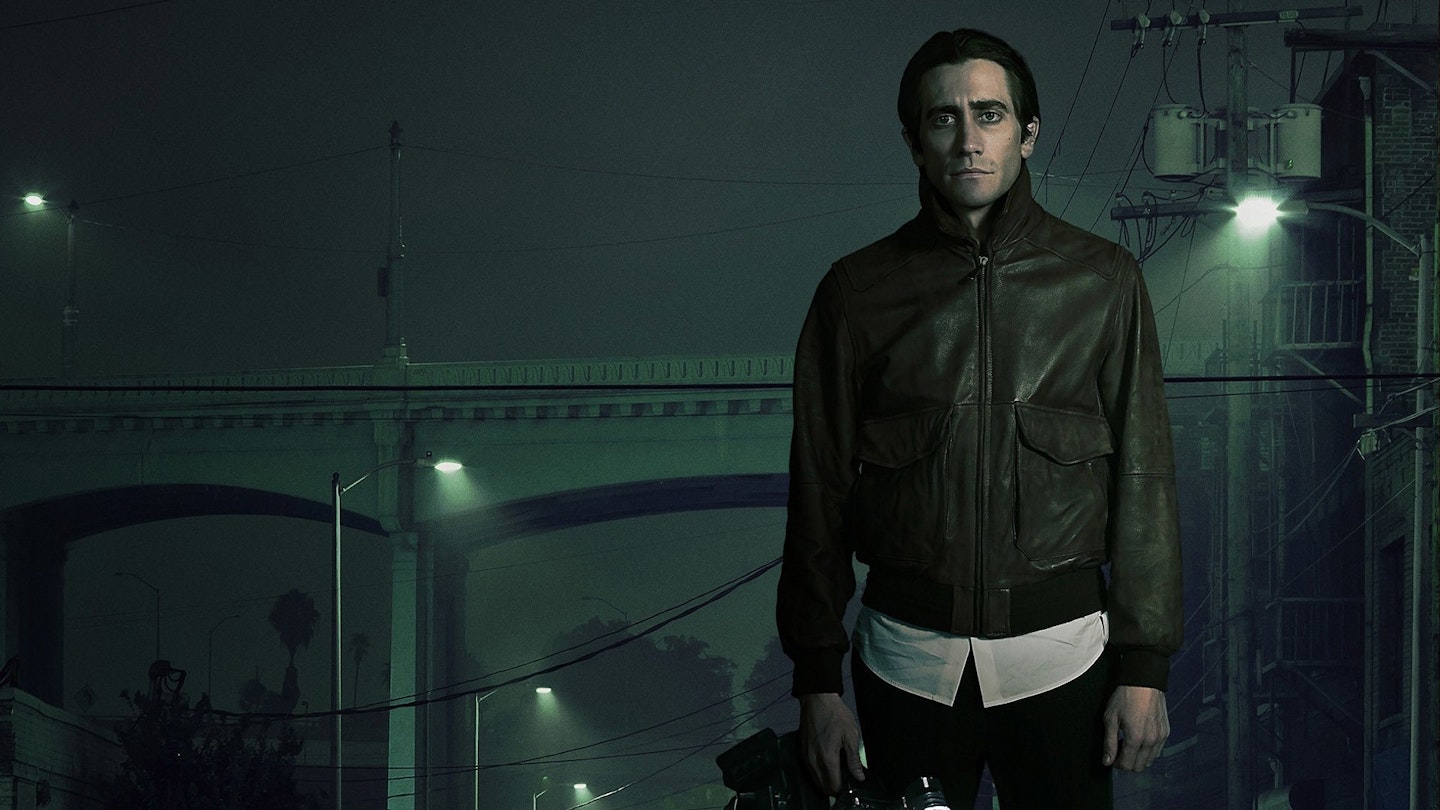Brother to both Tony and John, Dan Gilroy knows the movie business backwards, writing a variety of scripts over the years, from the infamous Freejack to the curious The Fall. He also wrote his first feature film as director, Nightcrawler, a dark tale of an ambulance-chasing vigilante news reporter - Jake Gyllenhaal's Lou Bloom - whose unwavering self-belief and twisted morality sets him on a crash course with news channel producer Nina Romina (Rene Russo) and the rest of the "If it bleeds, it leads" Los Angeles media maelstrom. With the film out on Blu-ray, DVD and steelbook on March 2, and Gilroy up for a Best Screenwriting Oscar this Sunday, we spoke to the man himself about eight key moments from the five-star film.
Warning: the second page of this feature contains details on some scenes you may not want to hear about until you've watched the film. So consider this a spoiler warning - you have been warned of spoilers.
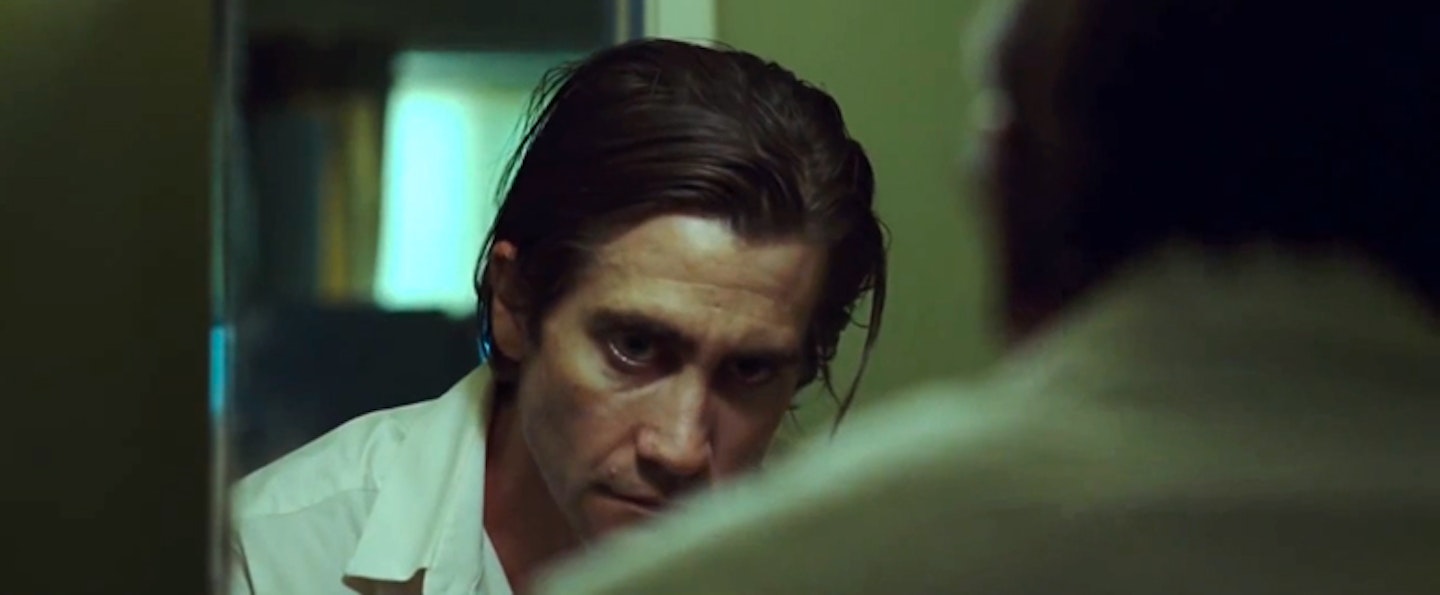
The Mirror Smash
"All of the scenes inside Lou’s apartment were funneled down to one day. We had to shoot everything there in just one day. Actually, it was less that one day because our schedule got tightened up. So Jake, our director of photographer Robert Elswit and I knew that we had a shoot quite a few things in the apartment, but it wasn’t scripted fully. We knew we needed him watching the TV, but we needed him watering the plants, going to the kitchen, going to the bathroom, that sort of thing.
"So when we got the bathroom, it was very late at night, and we’d been shooting at that point for 14 hours. Jake was in the bathroom, and his character at that point in the story was upset because Nina (Rene Russo) had just yelled at him and Lou was going to react to that to some degree. So breaking the mirror was not planned – Jake just slammed the mirror, and I didn’t think anything was wrong, but he came out and he’d sliced the ball of the thumb on his left hand, cutting off some skin, maybe an inch and a half long and an inch across. It was extremely bloody.
"It was now 6am, and we were heading to Cedars-Sinai hospital. The neurosurgeon took 44 stitches to sew up Jake’s hand, and seven hours later we were back shooting the last night of the whole shoot. The last two scenes that we shot, with his hand in a cast, were the scenes in the salvage yard, and if you notice he has his hands behind his back.
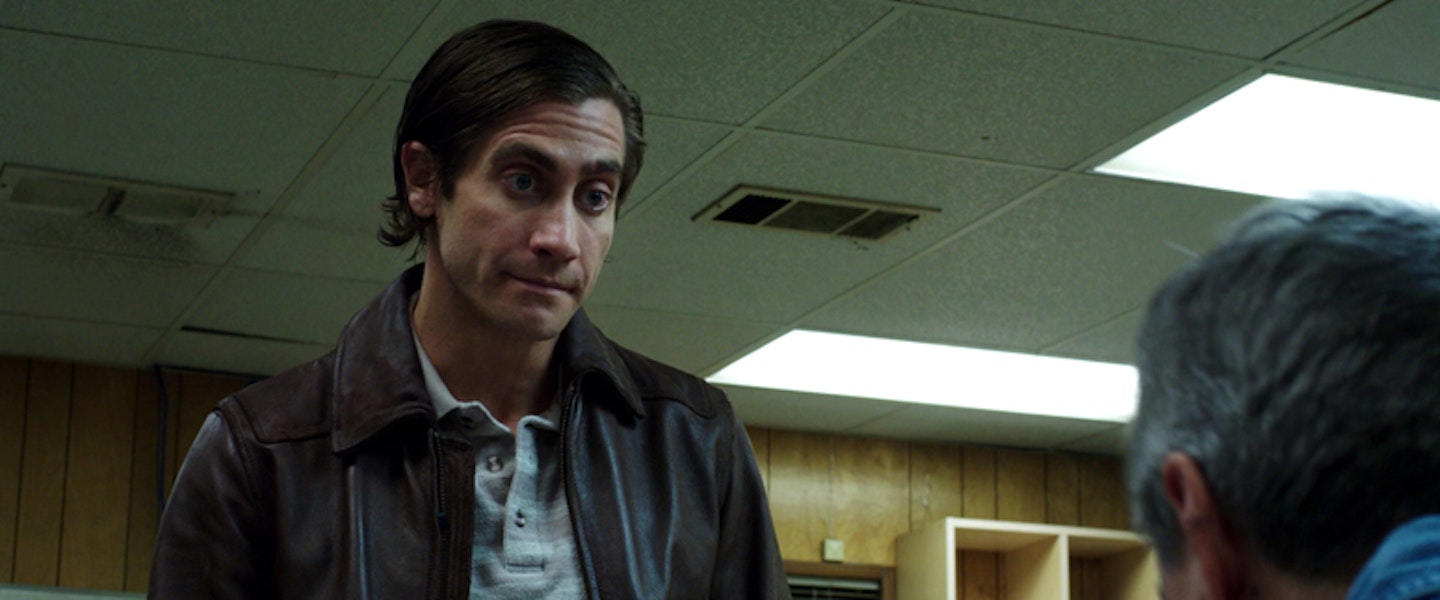
The Opening Salvage Yard Scene
"Jake learnt the script like a play, he knew whole monologues backwards. So I was the beneficiary of Jake’s full commitment. He’d started to memorise the script two months before the shoot started, and I checked in with him every couple of days, and he would start reciting these long monologues. I was so heartened and, well, excited, to learn that just a month before shooting Jake had memorised the whole script. That allowed us to do so much: to play on the set. All you’re trying to do when you’re shooting a movie is buy time for the actors to do as many different things as they possibly can or desire to do, and if you’re not worrying about the actor remembering the lines, you can start going through these scenes in a time-efficient fashion. Jake gave us that ability. Jake gave us that gift, that gift of so much more time to experiment and explore.
"The line 'My motto is if you want to win the lottery you've got to make money to get a ticket' has taken on a life of its own. I think that’s in part because of this viral trailer, which was Jake’s idea. Making the film, he loved that speech in the salvage yard, and he said, ‘If we ever have a minute or two, can we shoot me doing the monologue in different places? That way we can use it in the marketing…’
So after the movie wrapped, we edited together this viral trailer for YouTube, using five different versions of Jake doing that speech in different locations.

**Lou Entering A House Illegally For The First Time **
"It was Jake’s idea to lose 27 pounds. Two weeks from shooting, we were talking about the hair for the character. I always imagined the hair would be short, military, but Jake said, ‘I’ve got this longer hair, why don’t we keep it?’ Then a week before shooting he said, ‘What if every time I do something larcenous, I put my hair into a little bun?’ It all makes sense now, and it might even seem like a clever choice, but there were people at the time who were very against it. ‘It looks absurd, it looks stupid, what’s going on?’ And since Jake was so respectful of my script, as I say, I was extremely respectful of Jake’s creative process. This is an actor who is bringing a very unique character study to life and I wasn’t going to put the brakes on.

Joe Loder Offering Lou A Job
"That scene where Joe (Bill Paxton) offers Lou a job was a lot of fun to write. I loved the character that Bill played. I always imagined that Bill’s character, Joe Loder, was T1, and Lou is the evolutionary new model, T2. Here’s Joe Loder in all of his own nastiness, and we’ve seen this new creature that’s come to usurp him. So I saw it as an evolutionary thing. He doesn’t understand how far Lou can go, it’s beyond comprehension, [and] he’s literally blind to it.
As for actually shooting the scene, Bill Paxton had a problem laughing after takes. He’d come up to me and say, ‘Oh my God! Jake is acting totally crazy, this is wild!’ Literally, probably half a dozen times. ‘I’m having trouble keeping a straight face!’ He’s a funny guy, Bill.
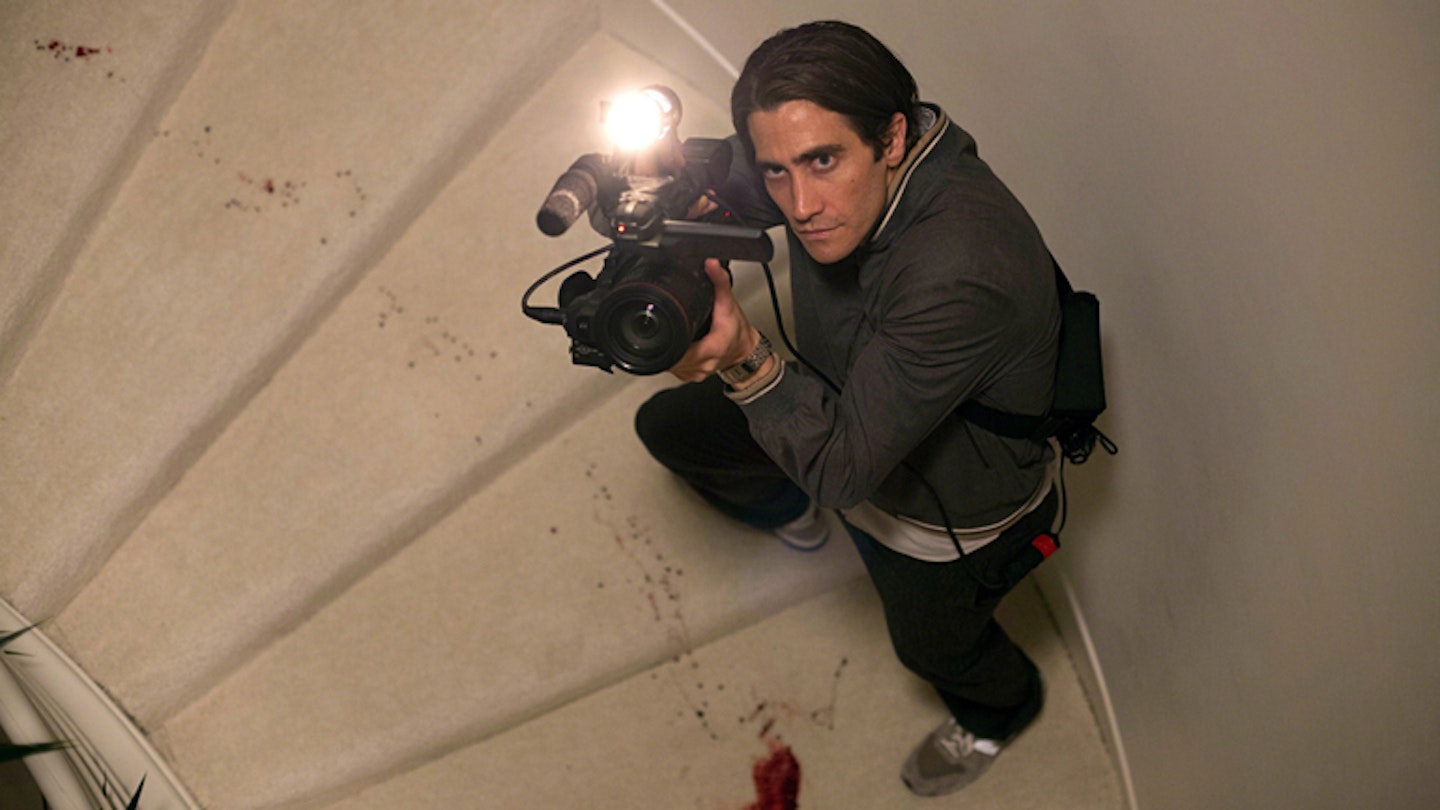
**The Granada Hills Home **
"We looked at about half a dozen homes before we found this one. That house is actually way out in the valley in Granada Hills, and I loved the driveway that went all the way down to the road, which wasn’t actually in the script. It had this magical, mystical quality as you entered all this violence. The house from the outside is extraordinarily visual, and inside the blood stood out so much on the white carpet. We had to totally re-carpet that house because we used so much blood there. It cost $10,000 to replace it all. $10,000 of white carpet because we basically destroyed it all.
But the key to that scene was Robert Elswit, our cinematographer, walking through with Jake and I and blocking it all. I think it was Robert’s idea, to play it almost entirely off Jake’s face, and his movements, rather than focusing on the gore and the violence. It was a really inspired touch, and a key to a lot of the decisions that followed, so it was a collaboration between the three of us. We only really see the violence through that little viewfinder on this camera. ‘What’s going on? What’s he looking at?’ It makes the viewer complicit in what’s happening.
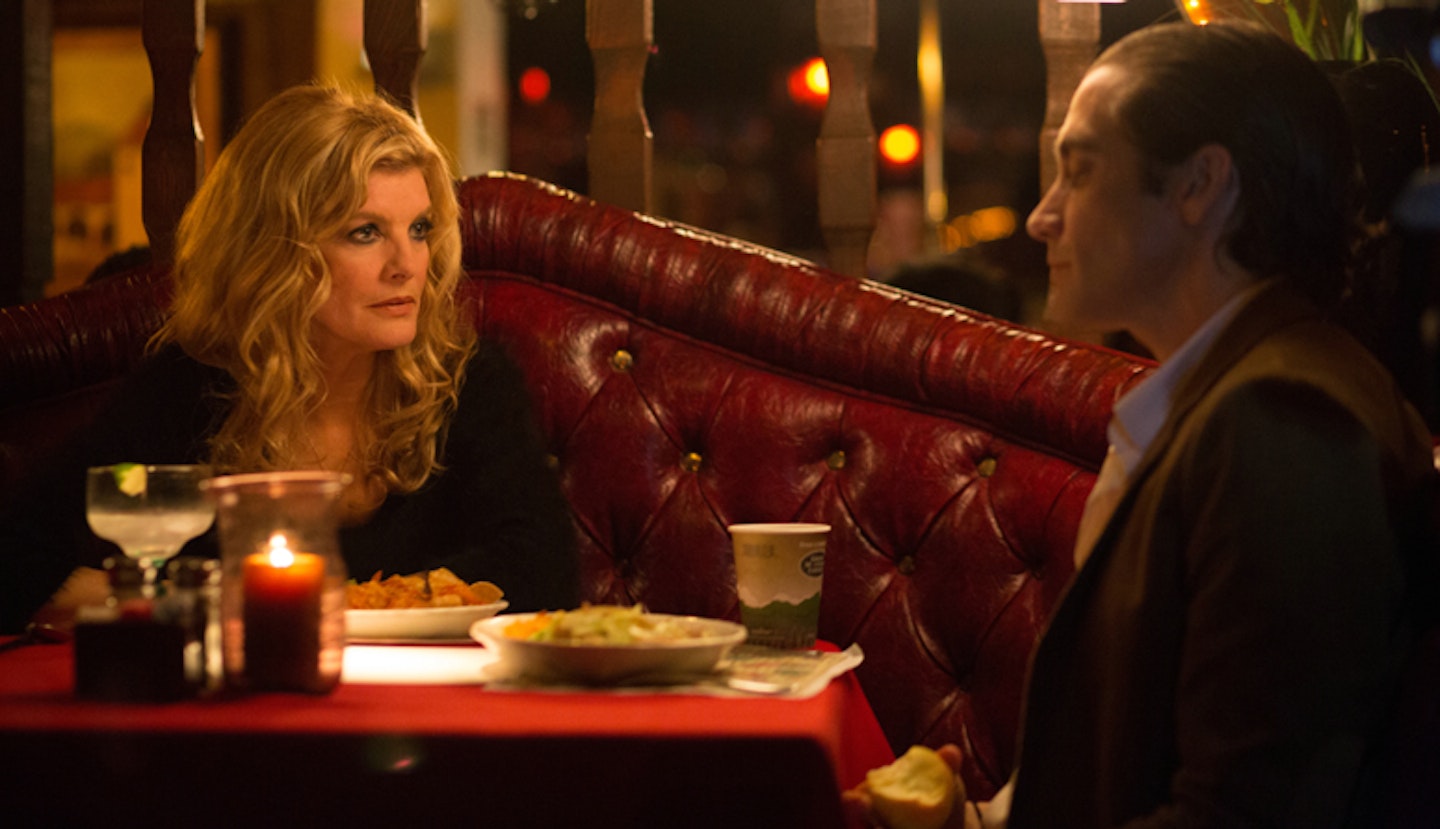
The Date Scene
"We had one full day for the date scene. We spent more hours going over that scene than any other in the film. Making a movie, there’s something called ‘contingency money’ and when you spend it it’s called ‘burning’. We burned more that day than any other because I just wanted to keep shooting. In terms of writing it, what I liked about the scene’s structure was taking two characters who we thought we knew at the beginning of the scene – Nina is a professional, strong woman in control and Lou is a vague, disturbed irritant – and over the course of the scene, those two facades get ripped down. Nina is revealed to be somebody who’s extremely vulnerable and Lou is revealed to be a brilliant monster. I liked how the power completely shifted in that scene.
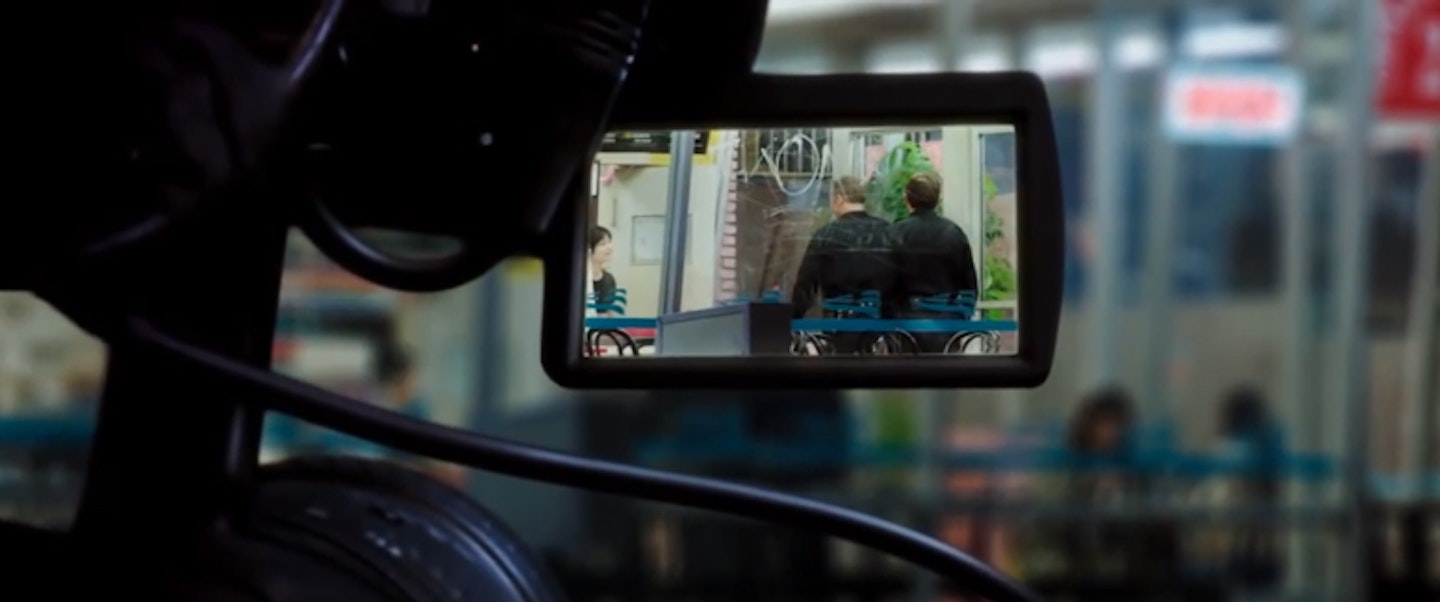
The Diner Shoot-Out
"The shoot-out sequence, again, that was something Robert and I blocked out in total. Everything from across the street, from the shoulders of Lou and Rick (Riz Ahmed), is all from their viewfinders. When we showed up to shoot it, all the stunt guys and all the camera guys were saying, ‘Where are the cameras going inside the diner?’ And we said, ‘There aren’t going to be any cameras inside the diner’ They couldn’t understand how the biggest spend in the film was all being shot from outside. People were very surprised at the way we shot it. Up until the gunfire, we’re watching the action all from these little viewfinders.
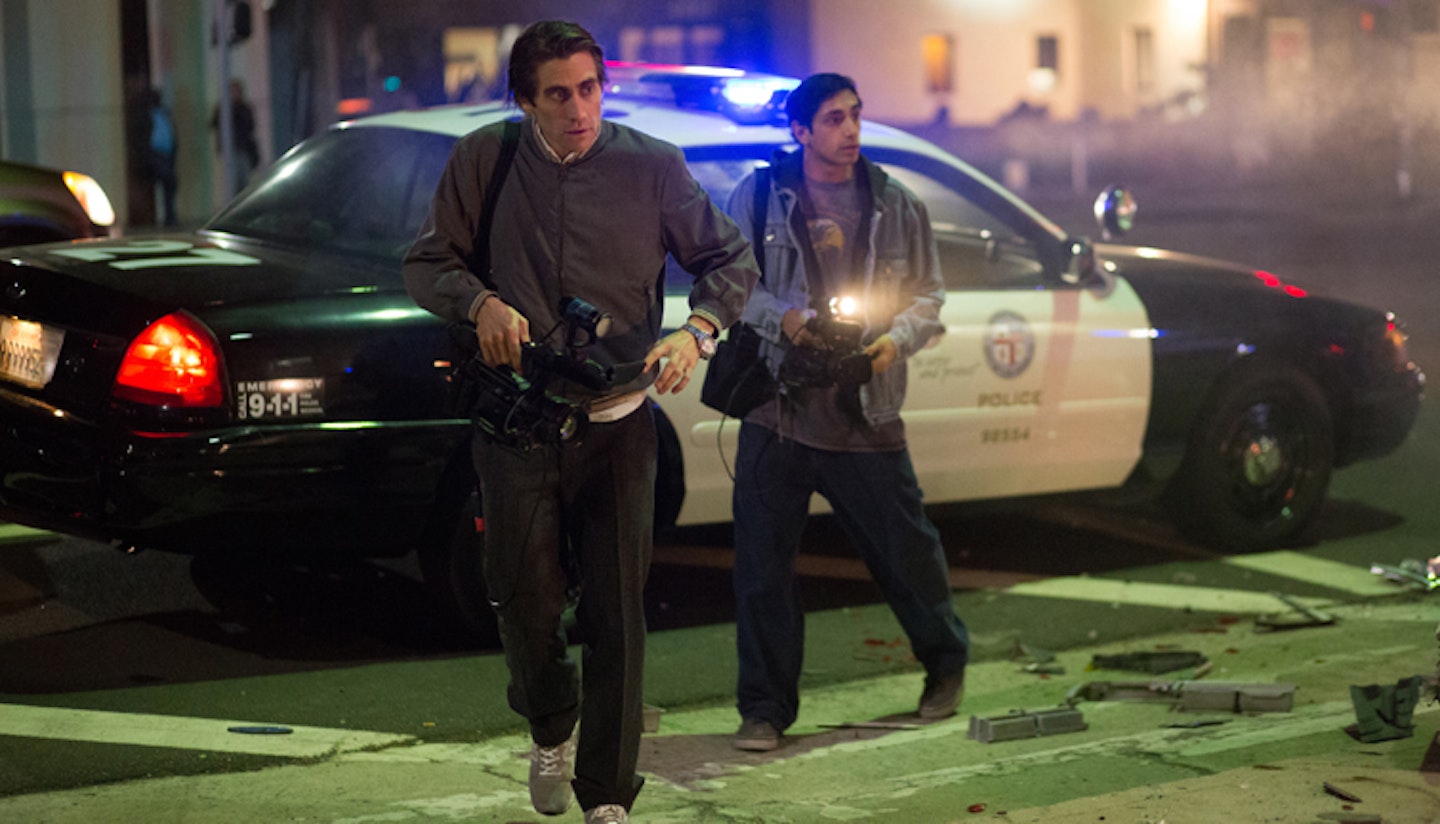
The Car Chase
"Jake did a tremendous amount of the driving in the film. He’d say, ‘I want this on tape, keep shooting, keep shooting.’ He’d be going 80 or 90 mph down a closed road in Los Angeles. The scene at the end of the chase, when the red Challenger crashes, and the car spins around? That’s Jake driving. He’s a great driver.
The car chase was a big part of our budget. There was a stunt man in that black SUV who is actually driving that car when it smashes into that parked car at 65 mph. This guy, Mike Smith, who is a second unit director, and did all the work on Need For Speed, he has this incredible group of drivers - Jake, in this case, being one of them...
